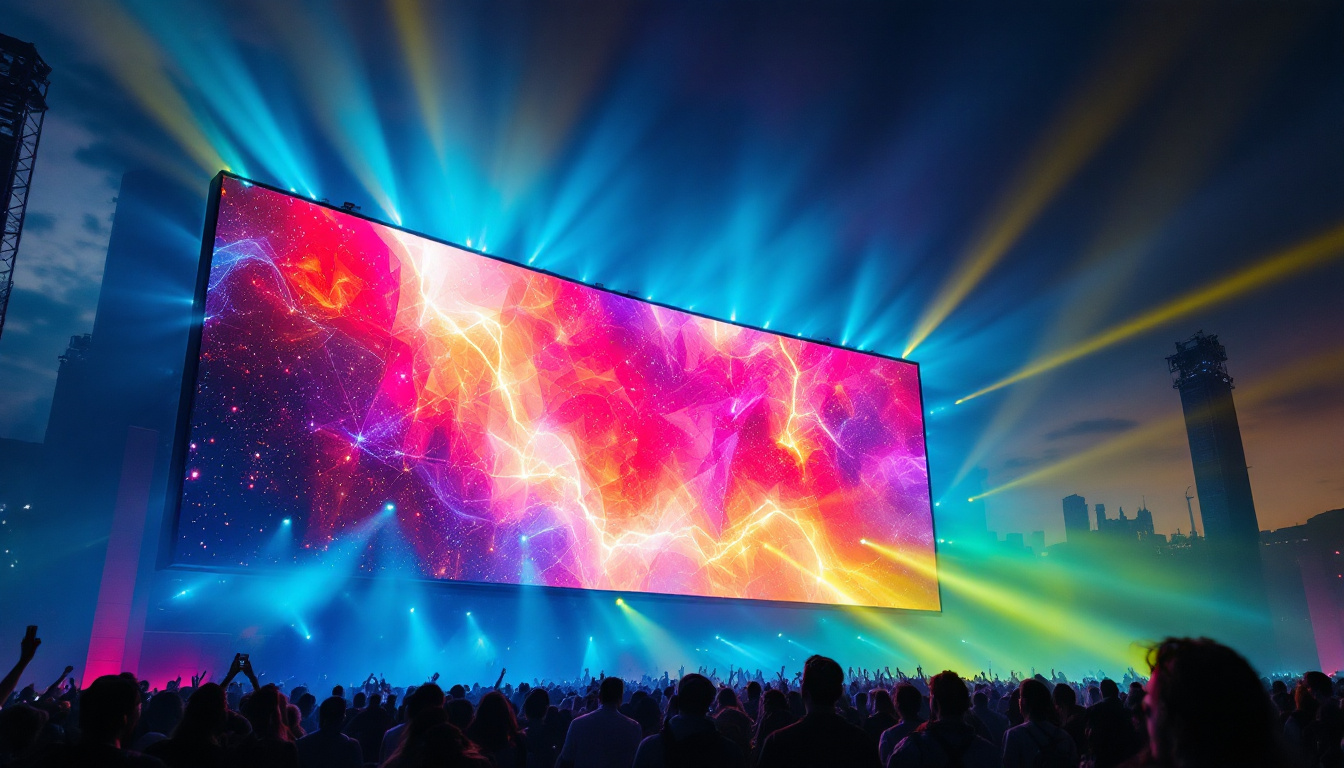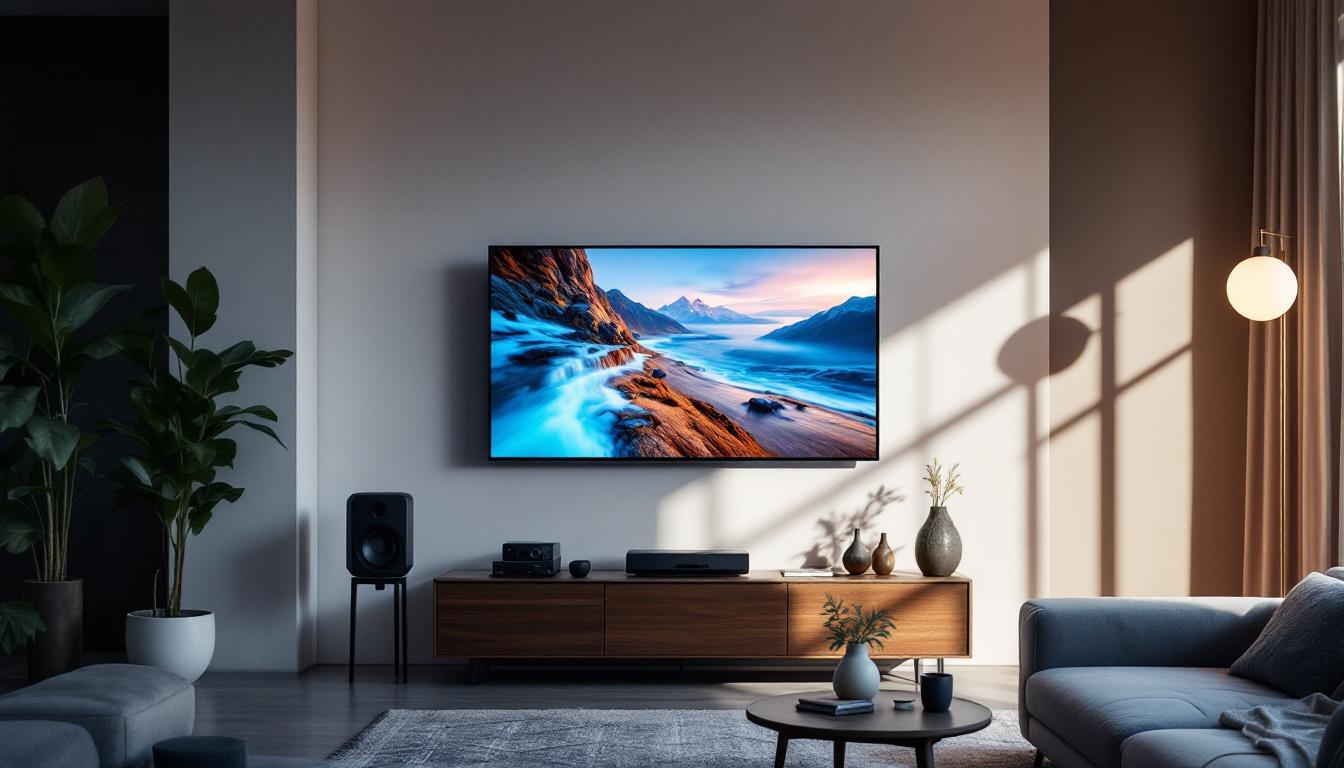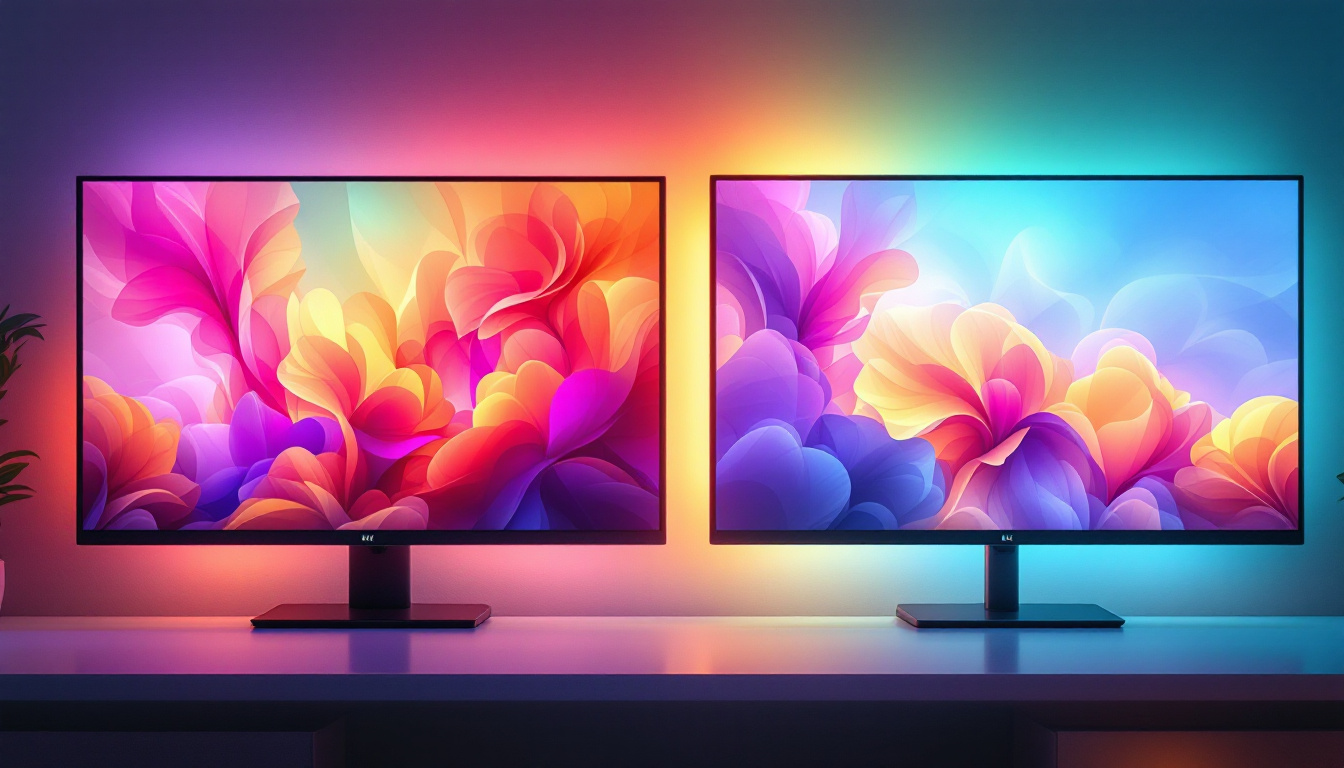Frameless TV: LED Display Explained
In the ever-evolving world of television technology, frameless TVs have emerged as a striking innovation, combining sleek design with cutting-edge display technology. Among the various types of screens available today, LED displays stand out for their vibrant colors, energy efficiency, and slim profiles. This article delves into the concept of frameless TVs, explores the intricacies of LED display technology, and explains why this combination is reshaping the home entertainment experience.
What Is a Frameless TV?
A frameless TV is a television set designed with minimal or no visible bezels around the screen. Unlike traditional TVs that have thick borders or frames, frameless TVs maximize the screen area, creating an immersive viewing experience. The design philosophy behind frameless TVs prioritizes aesthetics and functionality, making the screen appear as if it extends to the edges of the device.
Manufacturers achieve this by using ultra-thin bezels, often just a few millimeters wide, or by embedding the screen directly into the chassis with no visible border. This approach not only enhances the visual appeal but also allows for more compact and modern setups in living rooms, offices, and public spaces.
The Appeal of Frameless Design
The frameless design is more than just a style statement. It contributes to a more immersive experience by reducing distractions and focusing the viewer’s attention entirely on the content. This is particularly beneficial in larger screens, where thick bezels can interrupt the flow of images and diminish the cinematic feel.
Additionally, frameless TVs fit seamlessly into various interior styles, complementing minimalist and contemporary décor trends. Their sleek profile also makes wall mounting more attractive and less obtrusive, enhancing the overall aesthetic of the room.
Furthermore, the technology behind frameless TVs often includes advanced display features such as OLED or QLED panels, which provide vibrant colors and deep contrasts. This not only elevates the viewing experience but also allows for wider viewing angles, ensuring that everyone in the room can enjoy the same high-quality picture, regardless of their position relative to the screen. With the rise of smart TV functionalities, many frameless models also integrate seamlessly with home automation systems, allowing users to control their viewing experience with voice commands or mobile apps, further enhancing convenience and modern living.
In addition to their visual and functional benefits, frameless TVs often come equipped with cutting-edge sound technology. Many models incorporate built-in speakers that deliver rich audio without the need for additional sound systems, creating a more streamlined entertainment setup. This is particularly advantageous in smaller spaces where traditional sound systems may be impractical. As a result, frameless TVs not only serve as a focal point for visual entertainment but also enrich the overall sensory experience, making them a popular choice for tech-savvy consumers looking to enhance their home theater systems.
Understanding LED Display Technology
LED, or Light Emitting Diode, technology has become the dominant display type in modern televisions due to its superior brightness, color accuracy, and energy efficiency. To fully appreciate the advantages of frameless TVs with LED displays, it is essential to understand how LED screens work and what sets them apart from other display technologies.
How LED Displays Work
At its core, an LED display uses an array of tiny light-emitting diodes to illuminate the screen. These diodes can be arranged in various configurations, but the most common form in TVs is the LED-backlit LCD. In this setup, a liquid crystal display (LCD) panel is illuminated by LEDs placed either behind the screen (direct-lit) or along its edges (edge-lit).
The LEDs serve as a light source that shines through the LCD panel, which controls the color and intensity of each pixel. This combination allows for bright, vivid images with high contrast ratios and excellent color reproduction. Unlike older CCFL (cold cathode fluorescent lamp) backlighting, LEDs consume less power and can be made much thinner, which is crucial for frameless designs.
Types of LED Displays
There are several types of LED display technologies used in TVs, each with unique characteristics:
- Edge-Lit LED: LEDs are placed along the edges of the screen, allowing for very thin panels. However, brightness and uniformity can sometimes be less consistent compared to other types.
- Direct-Lit LED: LEDs are positioned directly behind the screen, offering better brightness and uniformity but often resulting in a thicker panel.
- Full-Array LED: A more advanced form of direct-lit LED where LEDs are arranged in a grid behind the screen. This allows for localized dimming zones, improving contrast and black levels.
- Mini-LED: An emerging technology that uses thousands of tiny LEDs for even more precise backlighting control, enhancing contrast and brightness while maintaining a slim profile.
- Micro-LED: A cutting-edge technology where each pixel is an individual LED, offering unparalleled brightness and color accuracy without the need for an LCD panel. Currently, Micro-LED TVs are premium and less common but represent the future of LED displays.
Why Choose a Frameless LED TV?
Combining a frameless design with LED display technology offers a host of benefits that appeal to both casual viewers and home theater enthusiasts. Understanding these advantages can help consumers make informed decisions when selecting a new television.
Enhanced Visual Experience
The frameless design maximizes the screen-to-body ratio, which means viewers get more screen and less distraction from bezels. When paired with LED technology’s bright and vibrant display, this results in a more immersive and engaging viewing experience. Colors appear richer, and images are sharper, making everything from movies to sports more enjoyable.
Moreover, LED TVs generally provide better contrast ratios and deeper blacks compared to older LCD models. Full-array and mini-LED variants further enhance this by enabling local dimming, which selectively dims parts of the screen to improve picture quality.
Sleek Aesthetics and Space Efficiency
Frameless LED TVs are designed to be ultra-thin and lightweight, making them ideal for modern living spaces where minimalism and elegance are prized. Their slim profiles allow for easy wall mounting, freeing up floor space and creating clean, uncluttered environments.
For interior designers and homeowners alike, the frameless LED TV is a versatile element that complements various décor styles, from contemporary to industrial. The absence of bulky frames means the TV blends naturally into the room, almost like a piece of digital art.
Energy Efficiency and Longevity
LED technology is known for its energy efficiency compared to older display types such as plasma or CCFL-backlit LCDs. This translates to lower electricity bills and a smaller environmental footprint. Additionally, LED TVs tend to have longer lifespans, with many models rated for tens of thousands of hours of use.
Consumers looking for a sustainable and cost-effective entertainment solution will find frameless LED TVs to be a smart investment over the long term.
Key Features to Look for in Frameless LED TVs
When shopping for a frameless LED TV, several features should be considered to ensure the best performance and value. These factors influence the overall viewing experience and the TV’s compatibility with various content sources and environments.
Resolution and Screen Size
Resolution plays a crucial role in image clarity. Most frameless LED TVs come in Full HD (1080p), 4K Ultra HD, or even 8K resolutions. For most consumers, 4K is the sweet spot, offering four times the detail of Full HD and future-proofing the purchase as content increasingly shifts to higher resolutions.
Screen size should be chosen based on the viewing distance and room size. A larger screen enhances immersion, but it’s important to balance size with resolution to avoid visible pixelation.
Refresh Rate and Response Time
Refresh rate, measured in hertz (Hz), indicates how many times the screen updates per second. Higher refresh rates (120Hz or above) provide smoother motion, which is particularly beneficial for fast-paced content like sports and gaming.
Response time refers to how quickly pixels change color, affecting motion clarity. Lower response times reduce blurring and ghosting effects, enhancing the viewing experience.
Smart TV Capabilities
Most modern frameless LED TVs come equipped with smart features, including built-in streaming apps, voice control, and compatibility with smart home ecosystems. These features add convenience and expand the TV’s functionality beyond traditional broadcasting.
Connectivity Options
Multiple HDMI ports, USB inputs, and wireless connectivity options such as Wi-Fi and Bluetooth are important for connecting external devices like gaming consoles, soundbars, and media players. Ensuring the TV supports the latest standards (e.g., HDMI 2.1) can improve compatibility with new technologies.
Challenges and Considerations
While frameless LED TVs offer many advantages, there are some challenges and trade-offs to consider before making a purchase.
Cost Implications
Frameless designs and advanced LED technologies such as mini-LED or 8K resolution often come at a premium price. Budget-conscious buyers may need to balance desired features with affordability.
Durability and Handling
The ultra-thin bezels and slim profiles can make frameless TVs more delicate during installation and transport. Careful handling is necessary to avoid damage, and professional installation may be recommended for wall-mounted setups.
Viewing Angles and Ambient Light
LED TVs, particularly edge-lit models, can suffer from reduced viewing angles and glare in brightly lit rooms. Choosing a model with an anti-reflective coating and wide viewing angles can mitigate these issues.
The Future of Frameless LED TVs
As display technology continues to advance, frameless LED TVs are poised to become even more impressive and accessible. Innovations such as Micro-LED and Quantum Dot enhancements promise brighter colors, deeper blacks, and thinner designs that push the boundaries of what is possible.
Furthermore, integration with smart home systems and AI-driven picture optimization will make these TVs more intuitive and personalized. The trend towards minimalism in design and the demand for immersive viewing experiences ensure that frameless LED TVs will remain at the forefront of consumer electronics.
Conclusion
Frameless TVs with LED displays represent a harmonious blend of style and technology, offering users a visually stunning and immersive entertainment experience. Their sleek design, combined with the brightness, color accuracy, and energy efficiency of LED technology, makes them an excellent choice for modern homes and offices.
When selecting a frameless LED TV, considering factors such as screen size, resolution, refresh rate, and smart features will help ensure the best fit for individual needs. Despite some cost and handling considerations, the benefits of these TVs make them a compelling investment for anyone looking to elevate their viewing experience.
As technology progresses, frameless LED TVs will continue to evolve, delivering even more captivating visuals and seamless integration into the digital lifestyle.
Discover the Future of Visual Entertainment with LumenMatrix
Ready to take your viewing experience to the next level? LumenMatrix is at the forefront of LED display innovation, offering a wide array of solutions that bring your visual communication to life. Whether you’re looking to enhance your home theater with an Indoor LED Wall Display, captivate passersby with an Outdoor LED Wall Display, or create a dynamic advertising platform with a Vehicle LED Display, LumenMatrix has you covered. Embrace the sleek, immersive world of frameless LED TVs and explore our complete range of products, from LED Sports Displays to Custom LED Displays. Check out LumenMatrix LED Display Solutions today and transform your space with unparalleled clarity and impact.































